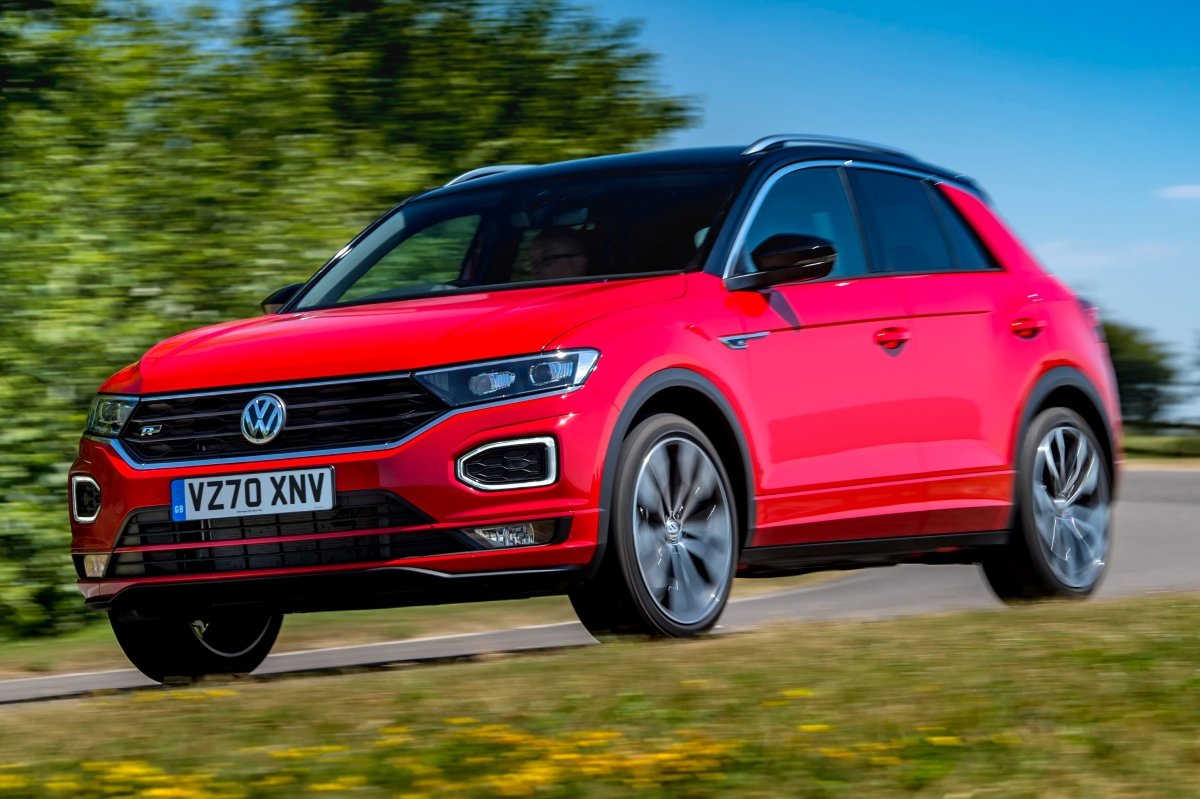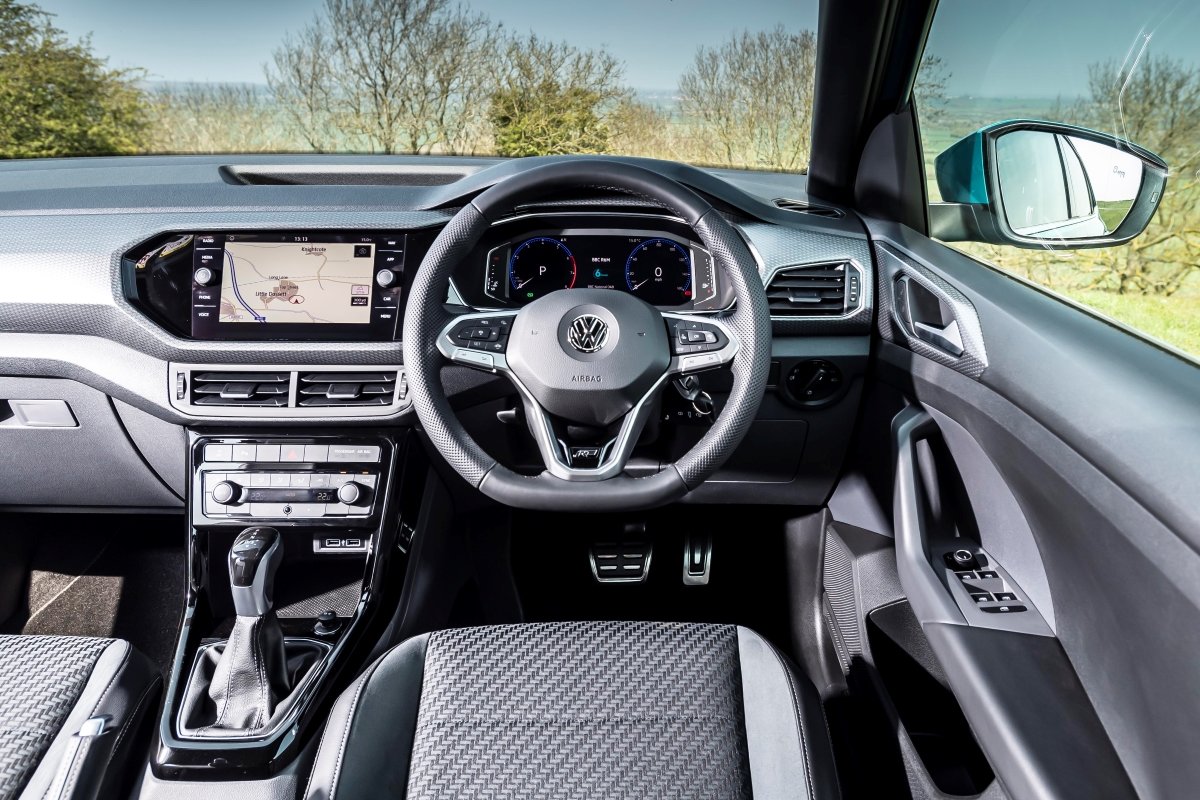Choosing between Volkswagen's compact SUV siblings can be tricky, as both the T-Cross and T-Roc occupy similar territory in the crowded small crossover market. The T-Cross arrived in 2019 as VW's entry-level SUV offering, whilst the T-Roc launched two years earlier in 2017 as a Golf-sized crossover positioned slightly higher in the range. Both models received significant facelifts - the T-Roc in 2022 and the T-Cross in 2024 - to keep them competitive in this fast-moving segment.
The key difference lies in their positioning and clever features rather than outright size, as there's surprisingly little between them dimensionally. The T-Cross brings some ingenious practicality solutions that its larger sibling lacks, whilst the T-Roc offers a more premium feel and additional engine options including high-performance variants. Both share Volkswagen's reputation for solid build quality and sensible engineering, but each has distinct characteristics that may appeal to different buyers.
Volkswagen T-Cross vs Volkswagen T-Roc




Practicality
The T-Cross takes a clever approach to maximising practicality with its sliding rear bench seat - a feature the T-Roc notably lacks. This allows owners to prioritise either passenger comfort or boot space depending on their needs. With the seats pushed fully back, the T-Cross offers 385 litres of boot space, but slide them forward by 14cm and this increases to a generous 455 litres. The T-Roc counters with a larger fixed boot capacity of 445 litres (392 litres for 4Motion models), which sits between the T-Cross's minimum and maximum figures. Both cars feature 60/40 split-folding rear seats, and the T-Roc includes an adjustable height boot floor on front-wheel-drive models.
Interior space tells a similar story of closely matched rivals. The T-Cross provides plenty of front-seat space but rear legroom becomes tight when the sliding seats are pushed forward to maximise boot capacity. The T-Roc offers consistently good space front and rear, with plentiful leg and headroom unless you specify the panoramic sunroof, which eats into the latter. However, both cars struggle to accommodate three adults in the back comfortably due to the transmission tunnel and narrow middle seat.
Interior quality was initially disappointing in both models, with too many hard plastics, but both received significant improvements during their respective facelifts - the T-Roc in 2022 and T-Cross in 2024. The T-Cross just about has the edge for versatility thanks to its sliding seats, though the T-Roc offers more consistent space overall.
Driving Impressions
Both models share similar engine ranges, reflecting their common Volkswagen Group underpinnings. The T-Cross offers a 94bhp 1.0-litre TSI as its entry point, with more powerful versions producing either 108bhp or 113bhp depending on emissions regulations at build time. A 148bhp 1.5-litre TSI tops the petrol range, whilst early models also offered a 94bhp 1.6-litre TDI diesel that was later discontinued. The T-Roc starts with a 108bhp 1.0-litre TSI (originally 113bhp), also offers the 148bhp 1.5-litre TSI, but extends further with a 187bhp 2.0-litre TSI and range-topping 296bhp T-Roc R. Diesel options include 113bhp 1.6-litre and 148bhp 2.0-litre TDI units.
On the road, both cars prioritise comfort over outright driving thrills, though they achieve this slightly differently. The T-Cross, based on Polo underpinnings, delivers one of the most comfortable rides in its class with well-controlled body movements. The T-Roc matches this comfort but exhibits slightly more body roll in corners, though it still handles neatly and precisely. Both cars become less forgiving on larger alloy wheels - particularly the T-Cross on 18-inch R-Line wheels and the T-Roc on its bigger rim options. The T-Roc offers optional Dynamic Chassis Control for adjustable suspension settings, though the standard setup proves quite capable. Neither car matches the Ford Puma for driving excitement, but both deliver the refined, secure driving experience most buyers in this segment prioritise. The T-Cross has a slight edge for ride comfort, whilst the T-Roc offers more engine variety for those wanting extra performance.
Technology and Equipment
Both models underwent significant changes to their trim structures during their respective facelifts. The T-Cross originally started with S trim, progressing through SE, United, SEL and R-Line specifications, but switched to Life, Match, Style and R-Line after its 2024 update. Entry-level Life trim now includes 16-inch alloys, LED lighting, leather multifunction steering wheel, automatic lights and wipers, front and rear parking sensors, adaptive cruise control, and an 8.0-inch touchscreen with wireless Apple CarPlay and Android Auto. The T-Roc's original S, SE, United and SEL structure was simplified to Life, Style and R-Line after 2022, with entry-level models including 16-inch alloys, eight-inch touchscreen, climate control and DAB radio.
The infotainment systems reflect each car's development timeline and facelift timing. Pre-facelift T-Cross models featured dashboard-integrated screens with physical climate controls, whilst post-2024 cars gained freestanding 8.0-inch displays (10.25-inch on R-Line) but lost physical climate buttons in favour of touch-sensitive panels. The T-Roc's system evolution went in the opposite direction - early cars had more intuitive controls, but post-2022 models became less user-friendly despite technological advances. Both cars offer comprehensive safety equipment as standard, including multiple airbags, autonomous emergency braking with pedestrian detection, and adaptive cruise control, helping both achieve five-star Euro NCAP ratings. The T-Cross has a slight advantage for standard equipment levels after its 2024 facelift, though the T-Roc counters with more trim variety and the option of high-performance variants.
Running Costs
Fuel economy figures are similar between the two models, reflecting their shared engine lineup. The T-Cross's discontinued 1.6-litre TDI diesel achieved up to 54mpg with manual transmission and 52mpg with automatic, whilst the T-Roc's 113bhp 1.6-litre TDI manages 54.3mpg and the 148bhp 2.0-litre diesel returns 53.3mpg with manual gearbox (51.4mpg with DSG automatic). Petrol engines show minimal differences - the T-Cross's 94bhp 1.0-litre TSI achieves 49mpg, the more powerful version manages 50mpg (49mpg with automatic), and the 1.5-litre TSI returns 47mpg. The T-Roc's equivalent engines deliver nearly identical figures, with close to 50mpg from the 1.0-litre and 40-45mpg from the 1.5-litre units.
The T-Roc's additional high-performance variants significantly impact running costs for those models. The 187bhp 2.0-litre TSI with four-wheel drive manages 35-40mpg, whilst the T-Roc R drops to the low-to-mid 30s. The R model also attracts additional tax implications, sitting above the £40,000 threshold that triggers annual surcharges for five years, and falls into a higher insurance group compared to other T-Roc variants. Both models offer Volkswagen's choice of fixed or flexible servicing intervals, with fixed annual or 10,000-mile services recommended for lower-mileage drivers. Neither car offers hybrid or electrified technology. Overall, the T-Cross has a slight advantage for running costs due to its simpler range without high-performance variants, though the core engine lineup delivers virtually identical economy between both models.
Verdict
Both the T-Cross and T-Roc represent strong choices in the competitive compact SUV market, each with distinct advantages that appeal to different priorities. The T-Cross excels in clever practicality solutions, particularly its sliding rear seats that provide genuine versatility between passenger space and boot capacity. Its 2024 facelift addressed early interior quality concerns and improved standard equipment levels, whilst maintaining one of the most comfortable rides in the class. However, it lacks the engine variety and premium positioning of its larger sibling.
The T-Roc counters with more consistent interior space, a broader engine range including high-performance variants, and a slightly more premium market position. Its larger boot capacity and better rear passenger space make it more suitable for families who prioritise consistent practicality over flexibility. The choice between them often comes down to specific needs: the T-Cross suits buyers wanting maximum versatility and value, whilst the T-Roc appeals to those seeking more space, performance options, and a more upmarket feel. Both deliver the refined, comfortable driving experience and solid build quality expected from Volkswagen, making either a sensible choice for small families seeking an SUV alternative to traditional hatchbacks.

